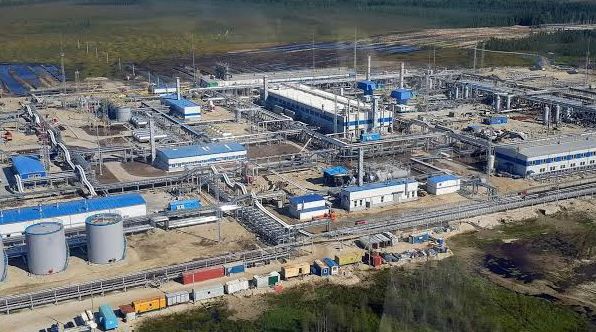The European Union's Solution to the Energy Crisis: A Power Bank in Ukraine
In the face of rising gas prices and political pressure from Russia, the European Union (EU) is eyeing Ukraine as a potential solution to its looming energy crisis. Approximately 60 miles from Ukraine's border with the EU, the Bilche-Volytsko-Uherske storage facility presents a tantalizing prospect to the European

In the face of rising gas prices and political pressure from Russia, the European Union (EU) is eyeing Ukraine as a potential solution to its looming energy crisis. Approximately 60 miles from Ukraine's border with the EU, the Bilche-Volytsko-Uherske storage facility presents a tantalizing prospect to the European bloc. This massive installation has a gas storage capacity that outmatches the largest site in Germany by over four times. The Bilche-Volytsko-Uherske site also benefits from Ukraine's long-standing role as a transit route for Russian energy, making its integration into the EU's grids a comparatively easy task.
In recent times, gas storage facilities in the EU are reaching capacity, filled to over 70%, a situation that could lead to a surplus in the months to come. Thus, storing excess gas in Ukraine's vast storage facilities becomes an attractive option, particularly as winter draws closer and gas prices are set to rise further.
Companies like RWE AG, a major German energy company, see the Ukrainian facilities as a potential linchpin in maintaining balance between supply and demand during the second half of 2023. These facilities' strong connectivity to EU gas markets makes them an attractive storage option, particularly given the uncertainties linked to war risks.
The Ukrainian gas market's fixed-rate storage model also adds to its attractiveness, according to Marko Zaalfrank, head of trade operations in continental Europe at Swiss Axpo. This feature positions Ukrainian gas storage as a highly competitive option in the industry.
However, for gas storage in Ukraine to be economically viable, a significant drop in prices is required, alongside assurances from the EU for protection against war risks.
Last year, gas prices in Europe soared to unprecedented levels, driven by Russia's war against Ukraine, sanctions against Russia, and a phased withdrawal from Russian gas. These events triggered a panic in the market, forcing government intervention as EU governments allocated almost $700 billion to support companies and consumers. Europe suffered massive financial losses, nearly a trillion dollars, as a result of the spike in energy costs due to Russia's invasion.
As fallout from this crisis, EU countries began to distance themselves from Russian gas and oil. Germany, in particular, conceded that its Nord Stream 2 gas pipeline project had contributed to the war in Ukraine. In January 2023, Germany announced that it had successfully diversified its energy infrastructure post the Russian invasion, and was no longer reliant on Russian energy sources.
The Bilche-Volitsko-Uherske storage facility, along with other gas storage sites in Ukraine, could transform the EU's energy landscape. If implemented effectively, these facilities might just be the bloc's best bet to secure its energy future while avoiding the grip of Russian energy dominance.




